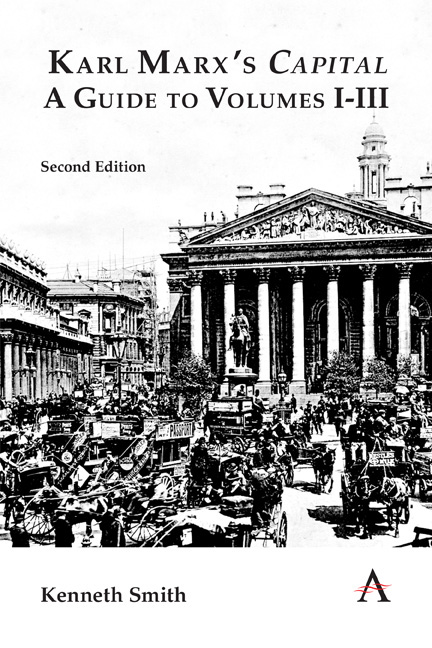Book contents
- Frontmatter
- Dedication
- Contents
- Preface to the Second Edition
- Introduction
- Part I The Development of the Capitalist Mode of Production
- Part II The Capitalist Mode of Production
- Part III The Underdevelopment of the Capitalist Mode of Production
- Part IV The Value Theory of Labour
- Conclusion to Part IV
- Conclusion
- Appendix: On Social Classes
- Notes
- Bibliography
- Index
- Frontmatter
- Dedication
- Contents
- Preface to the Second Edition
- Introduction
- Part I The Development of the Capitalist Mode of Production
- Part II The Capitalist Mode of Production
- Part III The Underdevelopment of the Capitalist Mode of Production
- Part IV The Value Theory of Labour
- Conclusion to Part IV
- Conclusion
- Appendix: On Social Classes
- Notes
- Bibliography
- Index
Summary
Before we can distinguish the capitalist mode of production from its pre-capitalist forms there are one or two preliminary assumptions we need to make. First, as we have seen, each capitalist must be in possession of a primitively accumulated capital which is of a sufficient magnitude to allow the individual to enter into the process of production as a capitalist. Second, more controversially, we will assume that the capitalists themselves do not actually work in the enterprise they establish, not even to perform the labour of supervision, but employ other people to do this work for them in the capacity of overseers, foremen and managers. (A capitalist who works for himself when he might otherwise not do so – a guild master for example – being regarded by Marx as a hybrid, somewhere between a fully fledged capitalist and a labourer.) This second assumption seems odd at first. There were no doubt many manufacturers, especially at the beginning of the Industrial Revolution, who carefully managed the enterprises they had set up and jealously guarded their investments. However, this assumption is merely a simplifying abstraction that Marx makes in order to present his argument more clearly. What is more, although it was probably common for capitalists to work in the enterprises they owned during the manufacturing period proper (up until 1775 or so) this was not always the case during the period of machinofacture (from 1775 onward) that Marx is considering here. And today, of course, it would be a very odd thing indeed if everyone who has their savings in a bank or who has invested in a pension fund knew which companies their money was invested in, or still less took a hand in the day to day running of these enterprises. Marx gives the following illustration in Chapter 11, Capital, Vol. I (1974a, 291–2 [1976, 422–3]), on the ‘Rate and Mass of Surplus Value’, which incorporates both of these preliminary assumptions.
Before an individual can be transformed into a capitalist a certain sum of money must be assumed to be in the hands of our would-be-capitalist before such a transformation can take place. I call this individual a ‘would-be capitalist’ here because of course, at this stage, he or she has not yet actually become one.
- Type
- Chapter
- Information
- Karl Marx's 'Capital': A Guide to Volumes I-III , pp. 40 - 42Publisher: Anthem PressPrint publication year: 2021



